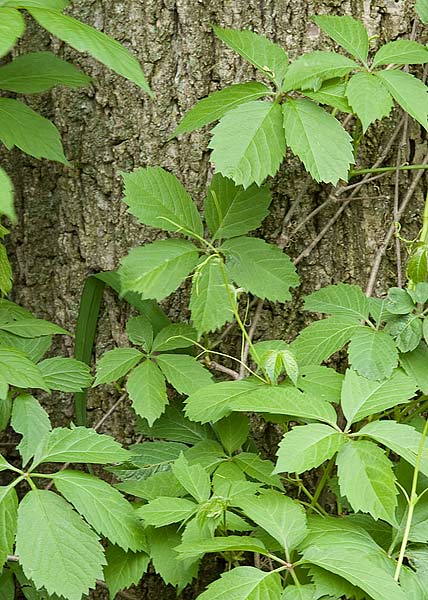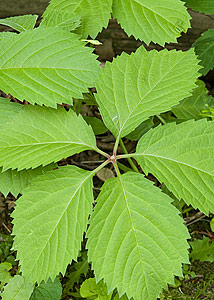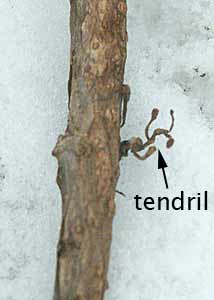

| Classification Hierarchy | |
| Kingdom | Plantae |
| Subkingdom | Tracheophyta |
| Superdivision | Spermatophyta |
| Division | Magnoliophyta |
| Class | Magnoliopsida |
| Subclass | Rosidae |
| Order | Rhamnales |
| Family | >Vitaceae |
| Genus | Parthenocissus |
| Species | Parthenocissus quinquefolia |

The name is derived from the Greek words parthenos (virgin), and cissos (ivy). The plant is widely distributed in the U.S. It is shade tolerant and a frequent element in Iowa woodlands. It is cultivated for landscaping and many minor horticultural forms have been named. It grows easily and needs to be controlled so it doesn’t smother (by shading) the trees it climbs. In the wild, it’s vining habit is similar to that of poison ivy with which it is sometimes associated and often confused (see comparison).
Additional references: 1, 2, 3.
Flowers: Bloom-May?; color-yellow/green; inflorescence (20 to 200 flowers)-panicled groups of cymes.
Stems: woody, nodes produce tendrils ending in adhesive discs. Older stems also produce aerial roots similar to those of poison ivy, but thicker and redder.
Leaves: compound-palmate, 5 (3to7) leaflets,
Glossary: Botanical Terms pdf


